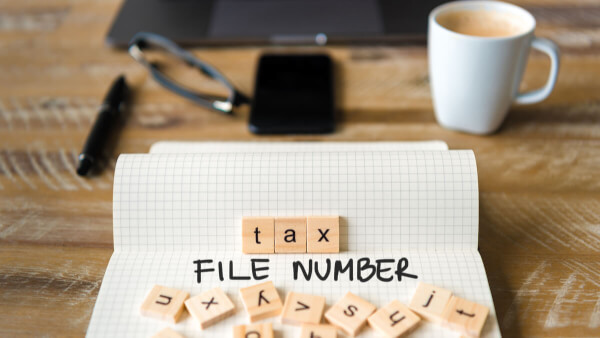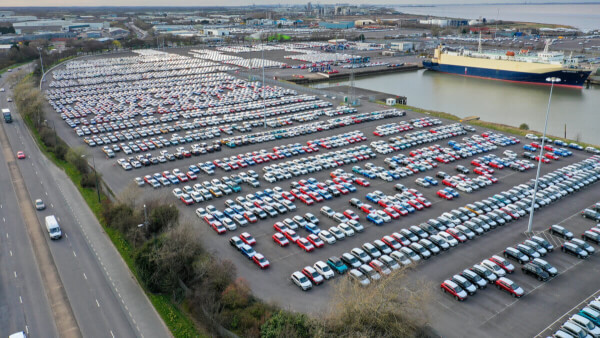Japanese international schools in Sydney. A quick guide
If you’re a Japanese expat looking to move to the Sydney area, you may be interested in looking for a Japanese school for your children. You may be keen for...

If you're moving to Australia from Japan or are a Japanese car enthusiast you might be wondering just how hard it is to import a car from Japan to Australia.
In this article we’ll explore what there is to know about importing a Japanese car to an Australian location, looking at the laws, processes, associated costs and time.
We’ll also let you know how Wise can help make the payments side of things a little cheaper and easier.
| 💰 Wise provides you the real exchange rate and low transparent transfer fees shown upfront. |
|---|
Learn more about
Wise money transfers
Whether it's worth shipping a Japanese car to Australia is really up to you. You need to decide whether the time and money it would involve is worth it for you to be able to have the car. Here’s a few things to consider.
Whether a car can be imported into Australia is governed by the Road Vehicle Standards Act 2018 (RVSA)¹ and accompanying Road Vehicle Standards Rules 2019.
The government agency responsible for approving a car for import is the Department of Infrastructure, Transport, Regional Development and Communications.²
It’s likely that your car would be imported under a single road vehicle application. This type of application has two sub-categories of vehicles that can be approved for first time importation.⁵
RAV or Concessional RAV entry allows certain cars to be imported and entered onto the Register of Approved Vehicles (RAV). Here are some of the cars covered by this type of application.⁵
A Non-RAV entry is used for cars that wouldn’t be used on the road in Australia unless there was a special authorised reason. The vehicles that come under this type of approval include the following.⁵
There are quite a few fees and costs associated with importing a car from Japan to Australia. Here’s some of the common charges, but keep in mind this list is not exhaustive.
When you apply to import a car into Australia you’ll need to pay the application fee. These are the fees that apply if you’re importing a passenger vehicle.³
| Type | Fee |
|---|---|
| International Whole Vehicle Type Approval (IWVTA) passenger vehicle | $650 AUD |
| Non-IWVTA passenger vehicle | $950 AUD |
Once you’ve received approval and your car has reached Australia, there are a few other government charges you’ll need to pay.²
Here’s some of the additional costs outside the Australian government that can be associated with importing a car from Japan.
| 💰 Pay the Wise way and Save |
|---|
| Wise can help you make these payments safely, even for large amounts. You'll get the real exchange rate, with small fees shown upfront. See our pricing. |
Here’s the steps you’ll need to take to import your car from Japan to Australia.
Create an account with ROVER and complete the online application form.² You can see which import option may be best for your circumstances by using the government quiz. Once the form is complete you’ll need to pay the application fee.
Your initial application to import your vehicle can take up to 60 business days to be approved.³ The approval will be emailed by the Australian Government and may include some vehicle conditions.²
Once you have your approval you can organise to have the car shipped to Australia. You just need to make sure these things have been taken care of.²
On arrival to Australia your vehicle needs to be cleared by customs. You’ll need to lodge an import declaration and pay any Australian taxes or duties that are owed.²
Next, you need to lodge a Quarantine Entry with the Department of Agriculture, Water and the Environment, and arrange for an inspection of the vehicle.² You or your broker will need to be present for the inspection.
If your car has conditions for import you might need to do some or all of the following.²
Once your car is imported you can go ahead and start applying for state road registration.
If you have your eye on a new or second hand Japanese car you’ll need to know how to buy a car in Japan. Here’s a basic overview.
Here’s a few companies who could help you with buying a car in Japan. It’s a good idea to see if their reputation, services and pricing meets your expectations.
Japanese cars are imported through Australian international sea ports. It’s best to see which ports are closest to you and choose the one that makes the most sense financially.
As a starting point, here are some of Australia’s major seaports for general cargo.
| State | Port |
|---|---|
| New South Wales | Port of Sydney, Port Botany |
| Queensland | Port of Brisbane, Port of Townsville |
| Victoria | Port of Melbourne |
| Tasmania | Port of Burnie, Port of Devonport |
| South Australia | Port Adelaide |
| Western Australia | Fremantle Ports |
| Northern Territory | Port of Darwin |
Here’s some estimated shipping times between Tokyo, Japan and Australia. Keep in mind these are subject to availability and can be impacted by world events.
| Origin / Destination | Timeframe⁴ |
|---|---|
| Tokyo to Sydney | 23-31 days |
| Tokyo to Brisbane | 20-27 days |
| Tokyo to Melbourne | 26-34 days |
| Tokyo to Adelaide | 22-36 days |
| Tokyo to Hobart (via Melbourne) | 33-42 days |
| Tokyo to Perth | 16-28 days |
| Tokyo to Darwin | 18-25 days |
Here’s a few tips that are specifically related to importing a car from Japan.
If you decide to import your next car from Japan it’s likely you’ll have to make some payments in Japanese Yen. This is where Wise can help.
With Wise you can safely send money to Japan with no hidden fees. Your AUD is exchanged for JPY using the real exchange rate, then sent on to the recipient’s bank or Wise account.
If you need to pay using a debit card, you can get a Wise Multi currency account which is attached to the Wise debit card. There are no monthly account fees and you can store, convert and send over 50 different currencies.
To see how easy Wise is, sign up for your free account today - registration can be done in minutes!
Open your Wise account in minutes 🚀
Sources:
*Please see terms of use and product availability for your region or visit Wise fees and pricing for the most up to date pricing and fee information.
This publication is provided for general information purposes and does not constitute legal, tax or other professional advice from Wise Payments Limited or its subsidiaries and its affiliates, and it is not intended as a substitute for obtaining advice from a financial advisor or any other professional.
We make no representations, warranties or guarantees, whether expressed or implied, that the content in the publication is accurate, complete or up to date.

If you’re a Japanese expat looking to move to the Sydney area, you may be interested in looking for a Japanese school for your children. You may be keen for...

Looking to move to Sydney and want to know the various costs of living? Here’s what it costs to live in Sydney.

Looking to move to Melbourne and want to know the various costs of living? Here’s what it costs to live in Melbourne.

If you’re an Australian citizen, or if you live and work in Australia as an expat, then you’ll likely want to get a tax file number (TFN). Having a TFN helps...

Looking for student job ideas you can do while you study in Australia, here are some for you as well as what you need to know to get started.

If you’re making the move to Australia from the UK or have an appreciation for British cars, then you might be considering importing a car. This article will...